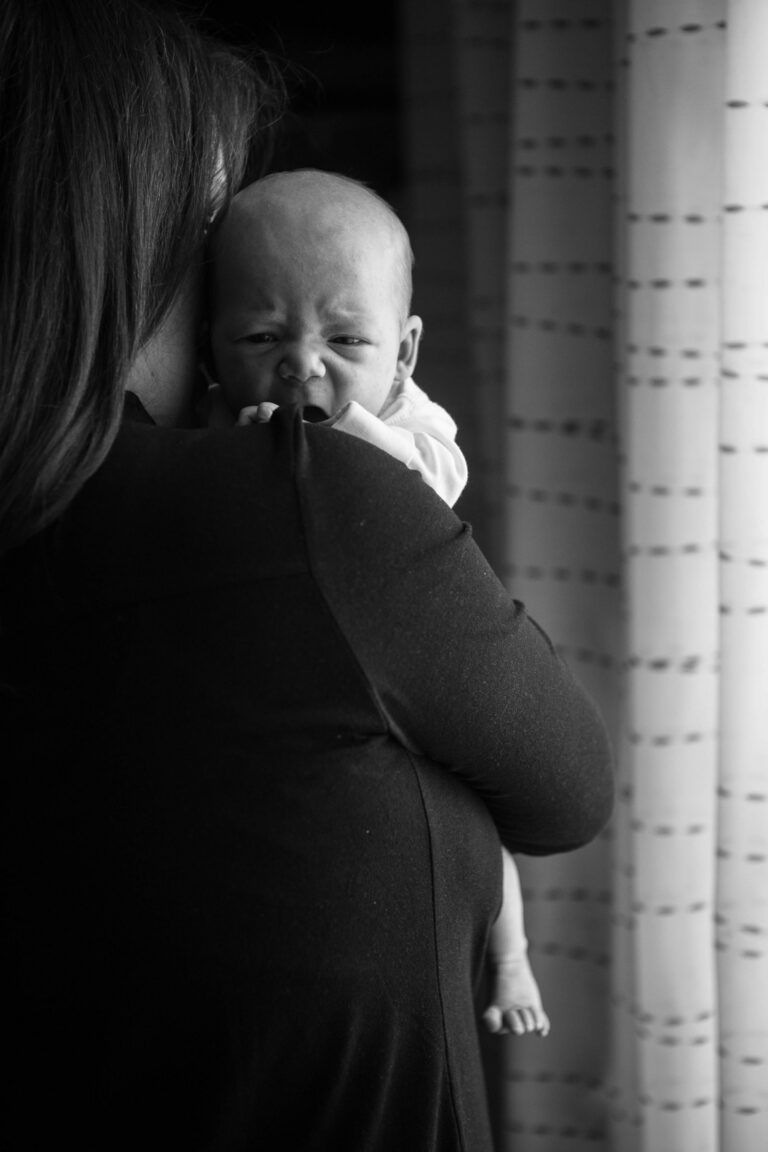The phrase highly sensitive child often stirs a flurry of concerns for parents striving to understand whether their child’s intense emotions or profound reactions signal something unusual, worrisome, or perhaps even promising. What if your child bursts into tears over the scratch of a clothing tag or recoils at the cacophony of a bustling birthday party? Are you facing endless bedtime negotiations, or witnessing your little one crumple after a gentle critique? Daily life with a highly sensitive child can sometimes feel like tiptoeing through a minefield of unpredictable outbursts and poignant, heartfelt responses. Yet, beyond the surface lies a temperament as rich and complex as the world it absorbs—an emotional landscape worth exploring. Here, you’ll find essential knowledge, nuanced explanations, and research-backed approaches to help you recognize, nurture, and celebrate the strengths of a highly sensitive child.
What Does It Mean to Be a Highly Sensitive Child?
Imagine perceiving every sound, feeling, or slight as if it were magnified—like living beneath a powerful microscope that amplifies every emotional ripple. At the heart of the term highly sensitive child is a biological temperament trait known as sensory processing sensitivity. These children don’t simply notice more; neurologically, their brains process information with an intensity not seen in most peers. Originating in the work of psychologist Elaine Aron, research estimates that around 15-20% of youth possess this heightened sensitivity—making it both relatively common and entirely natural.
Contrary to persistent myths, a highly sensitive child is not “dramatic for attention,” nor marked by fragility. Scientific advances in neuroimaging reveal that these children exhibit amplified responses in brain regions tied to empathy, awareness, and planning. While some thrive in social situations, most reflect deeply on sensory and emotional incidents—sometimes resulting in overwhelming reactions. These differences can lead to profound empathy, advanced emotional intelligence, or even bursts of creativity, but may also pose hurdles, particularly when misunderstood.
Recognizing Signs and Core Characteristics
How can you recognize a highly sensitive child? The signs, though subtle at first, often become unmistakable:
- Intense emotional reactions: Frustration, disappointment, or a minor surprise may provoke outbursts seemingly disproportionate to the context.
- Desire for calm and predictability: Many children gravitate toward tranquil and less stimulating environments, sometimes misread as shyness or social unease.
- Heightened empathy: Sensitive children frequently absorb others’ feelings, often reacting with deep compassion to joy or distress around them.
- Perceptiveness and insight: They tend to notice details in people’s moods, facial micro-expressions, or tiny shifts in routine that most peers brush off.
- Sensitivity to criticism and rejection: Even gentle corrections can be felt as piercing or discouraging.
- Physical reactions to sensory overload: Noise, strong lights, scratchy clothing, or even the taste of food may trigger avoidance or complaint.
Interestingly, characteristics can morph with developmental stages—young children may appear reticent or easily unsettled, while older ones could develop advanced social awareness or heightened introspection. For some, sleep disturbances or perfectionistic tendencies emerge, likely reflecting the relentless processing of daily stimuli.
Daily Life: Challenges and Unexpected Advantages
Living with a highly sensitive child involves navigating both emotional turbulence and extraordinary strengths. Everyday events—a missed invitation, a misunderstood instruction at school, a companion’s harsh tone—reverberate with greater force, sometimes culminating in tears or withdrawal. Simple routines, like getting dressed or transitioning between activities, may devolve into struggles if sensory input feels overwhelming.
Yet, these children often possess an unrivaled richness of imagination, depth of vocabulary, and social intuition—traits that flourish when familial and educational settings provide understanding and space for expression. Setting, tone, and routine matter profoundly: loud environments or abrupt changes can jar, while predictability and acceptance nurture resilience and adaptability.
Root Causes: Genetics, Neurology, and Environment
What predisposes a child to heightened sensitivity? Genetic factors are substantial—studies observe familial clustering, suggesting that sensory processing sensitivity is inherited. From the earliest months, even infants may display acute responses to touch or loud noises, underlying an intrinsic nervous system attuned to deep processing.
But environmental context equally shapes a highly sensitive child’s adjustment and growth. Supportive and validating parenting has demonstrated effects on resilience, while high stress, emotional dismissal, or unresolved trauma tend to exacerbate sensitivity’s challenges. For some children, co-occurring temperament features—perfectionism, introspective rumination—can magnify emotional intensity.
Medical distinction is vital: while parents may worry about overlap with neurodevelopmental conditions (autism spectrum disorder, ADHD), sensitive children typically possess well-developed social comprehension and do not exhibit repetitive behaviors or persistent attention deficits.
Parenting Strategies: Supporting Without Smothering
Every interaction offers a chance to model empathy, boundaries, and confidence for a highly sensitive child. How? Start by naming emotions together, offering language and validation for even the most puzzling reactions. Inviting children to describe their emotional and sensory experiences cuts through confusion—“Does that noise feel too sharp for your ears?”—and helps scaffold emotional regulation.
Observant parents soon notice early signs of sensory or emotional overload: flushed cheeks, fidgeting, withdrawal, or escalating demands. Timely interventions—a brief break, access to a quieter room, or simply pausing—can prevent overwhelm before it peaks. When anticipating high-stress events or transitions, prepare your child by discussing scenarios and exploring comfort measures together (a favorite toy, calming music, or familiar routines).
Discipline should be gentle, focusing on guiding rather than criticizing. Sensitive children absorb tone as much as content—what feels like a light admonition can linger as deep discouragement. “Time-ins” (calm discussions rather than punitive consequences) support learning and emotional security, while public correction or sarcasm can wound.
Advocating in school settings and social activities is also pivotal. Inform teachers of your child’s needs, arrange low-stimulation environments when feasible, and craft gradual exposure to challenging scenarios. Techniques inspired by Montessori and positive parenting encourage autonomy while protecting from overload.
Building a Supportive Home Environment
Routines are more than just timetables: for a highly sensitive child, they represent islands of safety amid the often-chaotic currents of daily life. Predictability in meals, sleep, and family rituals quells anxiety, while providing comfort zones—quiet nooks, dim lighting, soft textures—lets your child recalibrate after stressful experiences.
Encourage participation in age-appropriate decisions, cultivating autonomy while ensuring a reliable retreat for emotional downtime. Introduce calming or creative outlets—drawing, building, reading, or music—enabling your child to self-soothe and express inner complexity.
Educational and Social Milieus: Thriving Beyond Home
A highly sensitive child navigating school corridors may encounter unique hurdles—bright lights, noisy cafeterias, or shifting social dynamics. Collaborate with educators to establish calm-down spaces or sensory breaks. Prepare visual schedules, provide advance warnings of changes, and tailor seating to reduce distractions. Sometimes, flexible deadlines or alternate assessment methods harness a child’s strengths rather than trapping them in distress.
Helping your child decipher the often-cryptic etiquette of peer interactions—body language, turn-taking, subtle cues—builds social confidence. Exposure to structured, smaller-group activities over vast, free-for-all playgrounds can be more manageable and affirming. Addressing bullying or exclusion early is paramount, as sensitive children internalize peer rejection deeply.
Extracurricular activities should focus on interests and talents—be it painting, music, coding, or nature walks—which cultivate self-worth and provide a safe haven for connection.
Resilience and Emotional Regulation: Tools for Everyday Coping
Supporting a highly sensitive child isn’t just about workaround strategies—it’s about equipping them with a toolkit for navigating emotion-rich terrain. Mindfulness practices (deep breaths, grounding exercises), journaling, and creative therapies like art or dance help process emotions constructively. Outdoor physical activity isn’t just energy release; it acts as a buffer against stress overload.
Positive self-talk also matters: gently challenge catastrophic thinking, embed a growth mindset, and model realistic perspectives on mistakes and setbacks. Problem-solving can be broken into manageable steps, boosting confidence in unfamiliar or challenging situations. Consistency in home habits bolsters a sense of security that enhances adaptability.
When to Seek Professional Guidance
Not every highly sensitive child requires intervention. However, if your child’s distress escalates—persistent withdrawal, overwhelming anxiety, significant sleep or eating disruptions, or if daily function stalls for weeks—it’s wise to seek professional support. Pediatric psychologists can clarify whether sensory processing sensitivity predominates, or if an overlapping neurodevelopmental or affective issue is present.
Therapeutic strategies often target emotion regulation, stress reduction, and social competence. Early support prevents entrenchment of anxiety or mood disorders over time. Alarm bells—expressions of hopelessness, social isolation, or academic breakdown—signal the need for tailored psychological assessment.
Highly Sensitive Child Versus Neurodivergence
Some aspects of a highly sensitive child’s temperament cross paths with conditions like autism or ADHD. The lines can blur: both may involve sensory hyperreactivity or difficulty with transitions. Yet key distinctions lie in underlying social and behavioral patterns. Autistic children often face greater challenges with reciprocal communication and may show repetitive behaviors or fixations. ADHD typically features sustained difficulties in attention, impulse control, and hyperactivity exceeding sensitivity alone. If uncertainty persists, a comprehensive developmental evaluation can provide clarity.
Navigating Adolescence and Beyond
Adolescence transforms the landscape for a highly sensitive child—social demands heighten, emotional storms intensify, and new challenges loom. Yet, positive affirmation, adaptive coping skills, and ongoing support can transform sensitivity into a source of resilience throughout teen years and into adulthood. Here, self-acceptance and a sense of purpose flourish, as children discover how their temperament can enrich not only their own lives but those around them.
Key Takeaways
- The highly sensitive child possesses a normal and valuable temperament, not a flaw or transient state.
- Amplified responses to emotional and sensory events reflect deeper neurological processing, demanding both empathy and structure from caregivers.
- Signs range from intense emotional reactivity to perceptiveness, perfectionism, and sensory avoidance.
- Nature and nurture interplay: genes set the stage while environment, parenting, and routines shape adaptation.
- Parenting approaches that validate emotions, anticipate triggers, and encourage autonomy build resilience and confidence.
- Fostering a supportive home and school environment is essential to helping a highly sensitive child thrive.
- Regular mindfulness, creative outlets, and consistent routines underpin emotional regulation.
- Professional support may be necessary if distress impairs daily function or overlaps with additional developmental issues.
- There are trusted resources and specialists ready to help. For personalized advice and free child health questionnaires, download the Heloa app.
Understanding, patience, and gentle guidance will empower your highly sensitive child to transform challenges into strengths, lighting the path to a fulfilled and emotionally vibrant future.
Questions Parents Ask
How do I know if my child is just sensitive or highly sensitive?
Every child has their unique temperament, and it’s sometimes challenging to differentiate between a generally sensitive child and one with high sensitivity. Signs that point to high sensitivity include a deep awareness of subtle changes in the environment, being easily moved by emotional experiences (their own or others’), strong reactions to sensory inputs like loud noises, bright lights, or scratchy fabrics, and the tendency to reflect deeply on events. If your child often seems easily overwhelmed, or if transitions and surprises are particularly challenging for them, these could be markers of high sensitivity. Rassurez-vous, this temperament is natural and simply means your child processes the world a little differently.
Can highly sensitive children adapt to busy or noisy environments?
Highly sensitive children can adapt to lively or stimulating settings, though they may need extra support or time to do so. Gradual exposure, rather than immediate immersion, often helps; for example, starting with shorter visits to busy places and providing opportunities for quiet breaks. Maintaining routines and offering comfort objects may help them feel more secure. It’s also helpful to talk with your child about what to expect beforehand and to listen to their feedback on what helps them feel comfortable. With empathy and patience, many sensitive children find their own ways to enjoy and participate in a range of environments.
Should I be concerned if my highly sensitive child prefers to play alone?
It is tout à fait normal for highly sensitive children to sometimes choose solitary play, especially after busy or emotionally charged experiences. Playing alone allows them to recharge and process their feelings. This preference does not usually indicate a problem, particularly if your child also sometimes enjoys the company of others and is generally content. However, if your child seems persistently sad, anxious, or avoids all social contact, it may be worth discussing with a pediatrician or child psychologist for reassurance and support. Most of the time, respecting their pace helps nurture their well-being and confidence.









